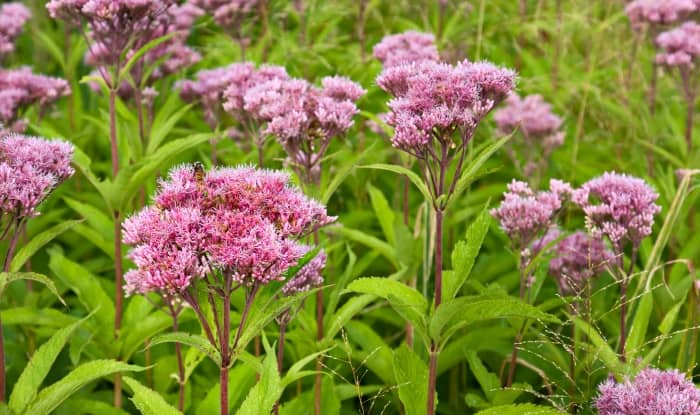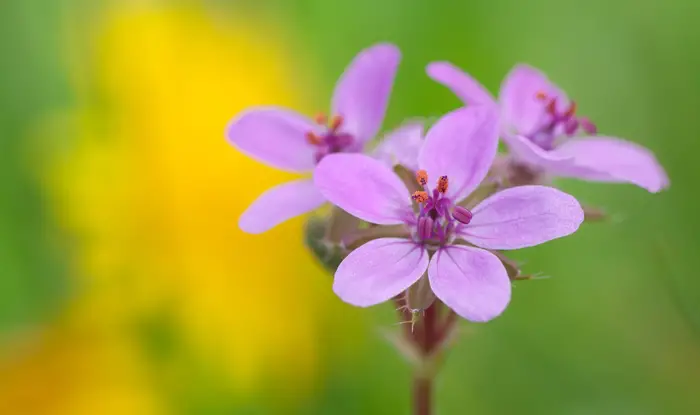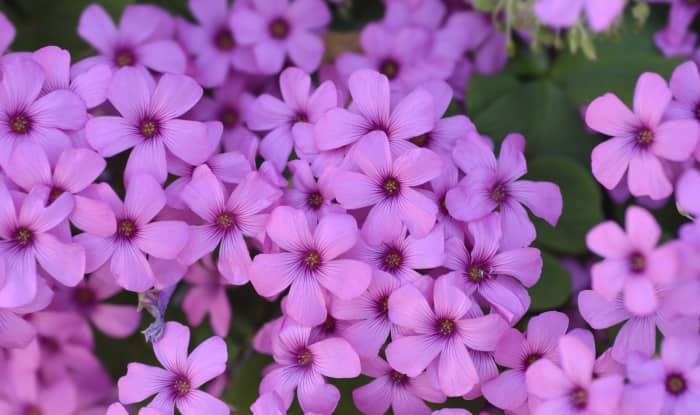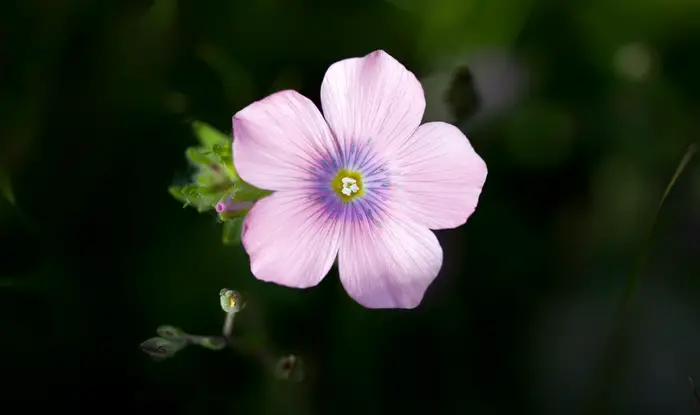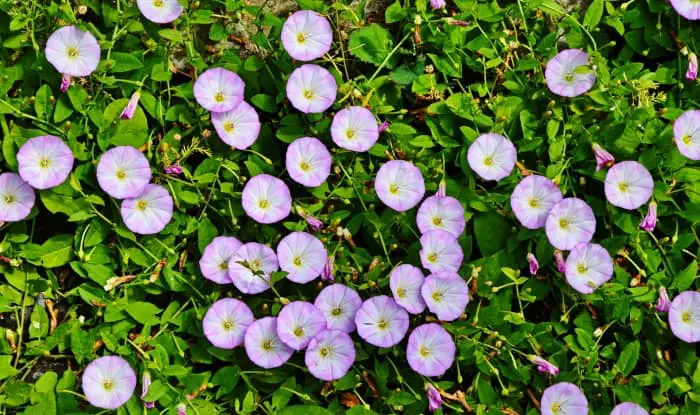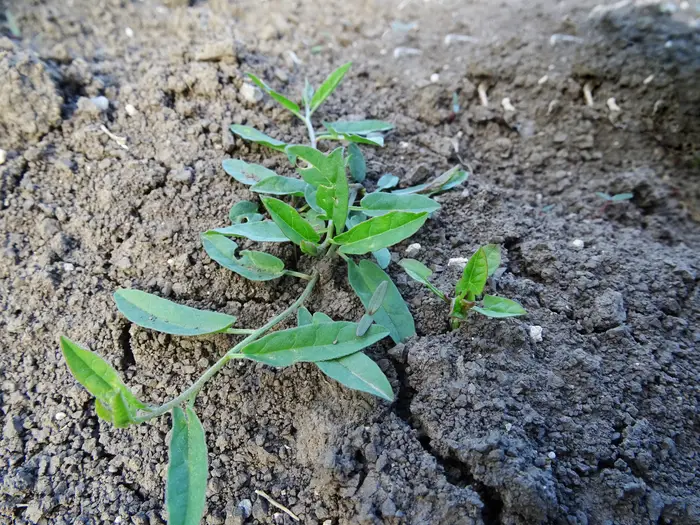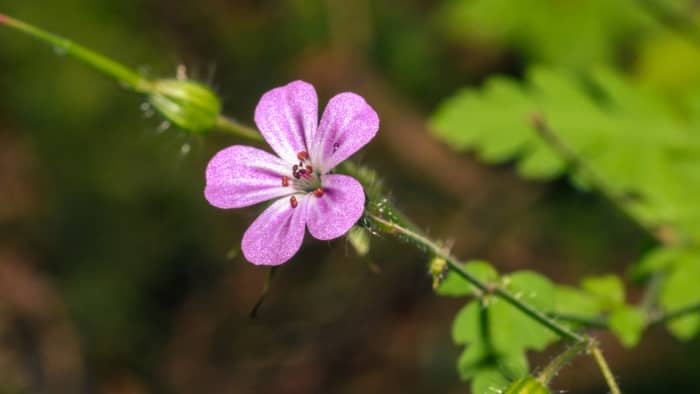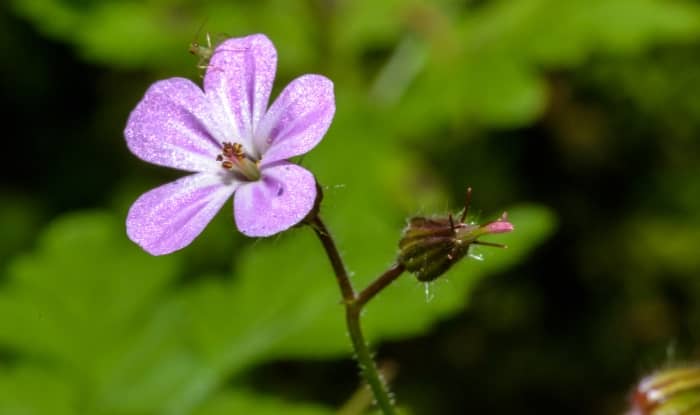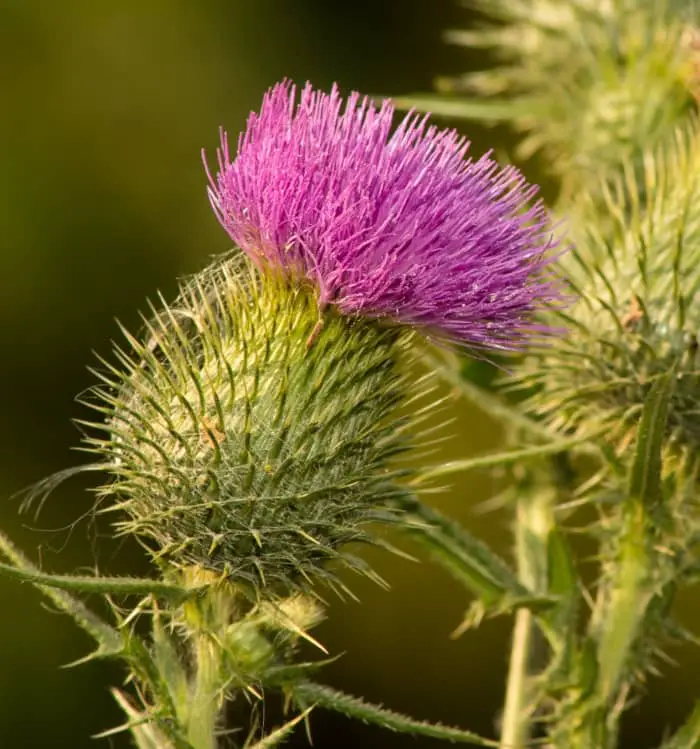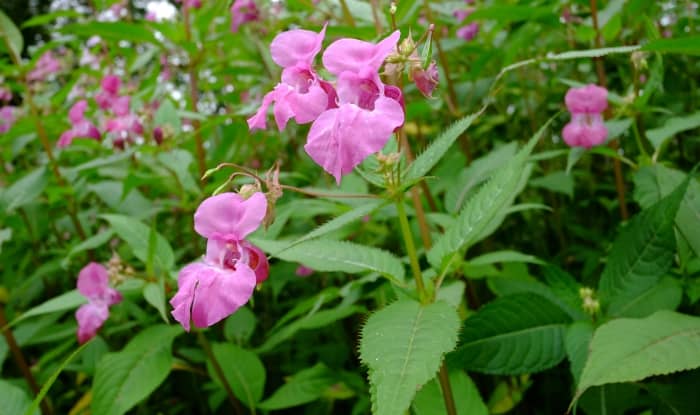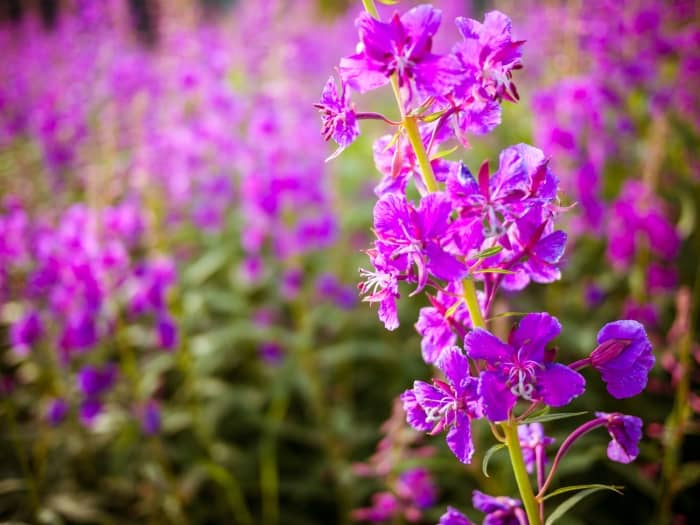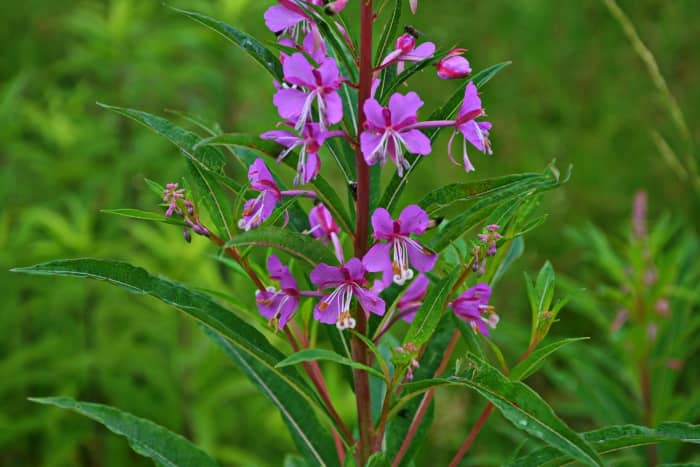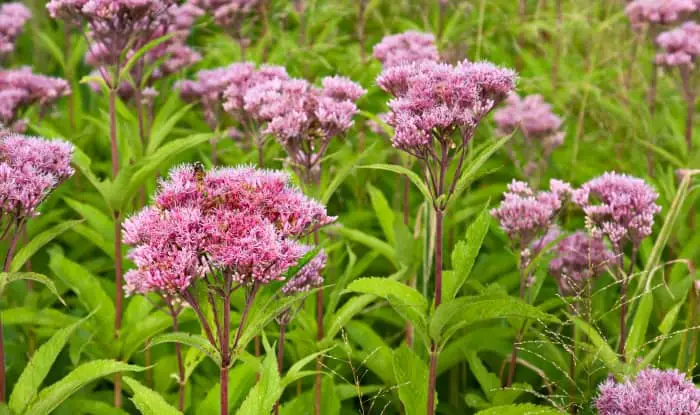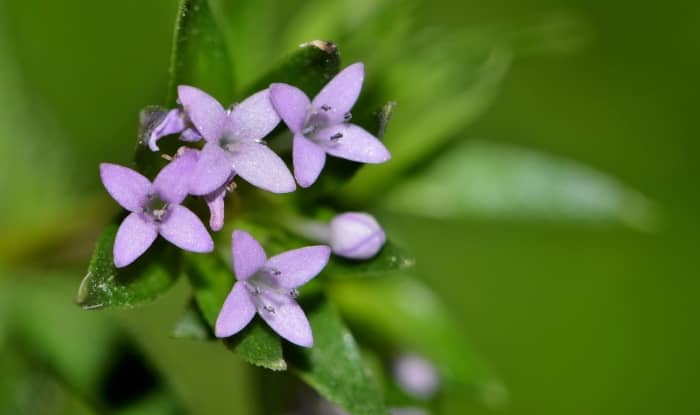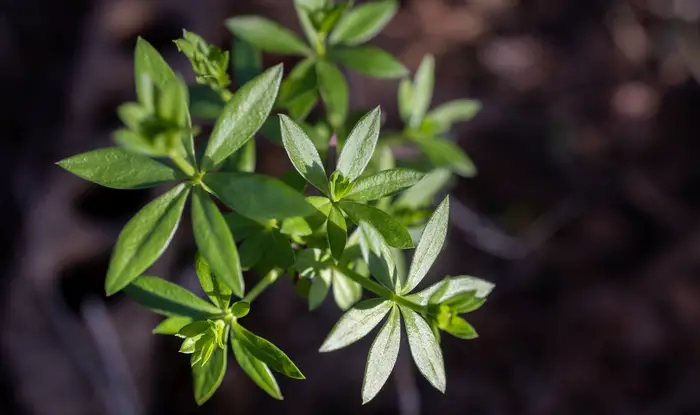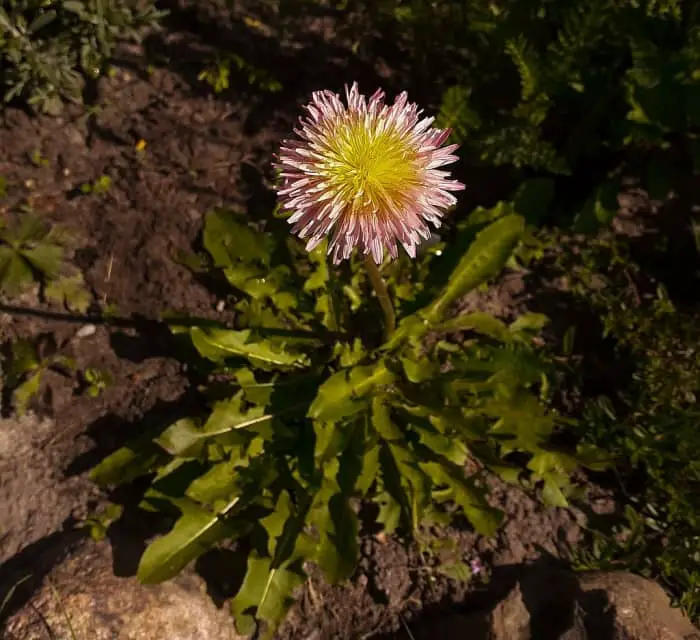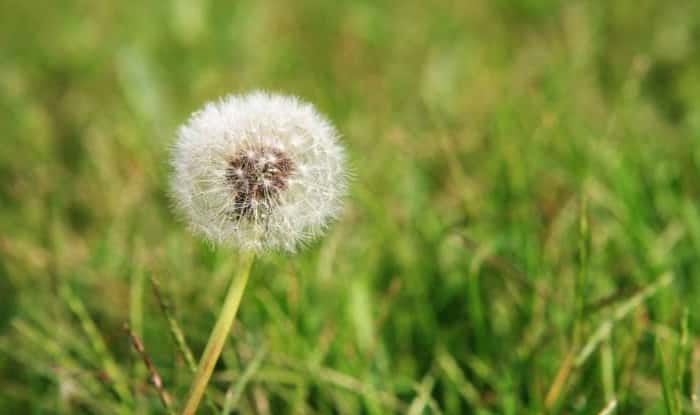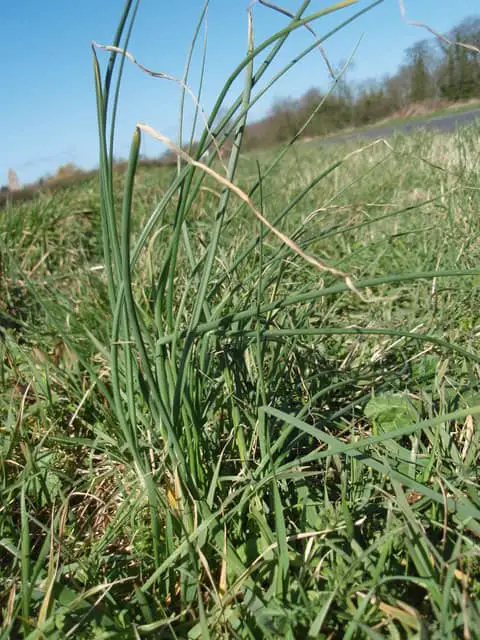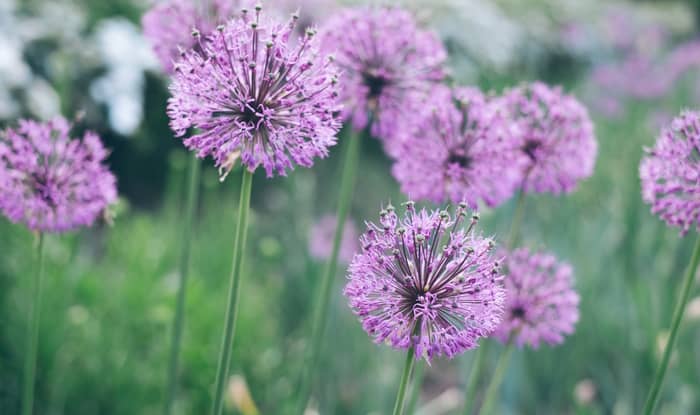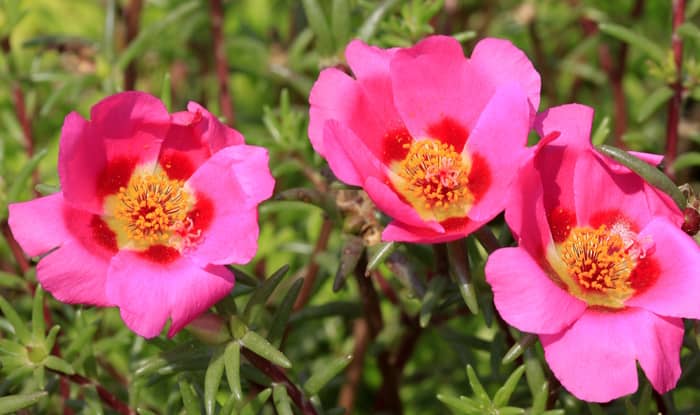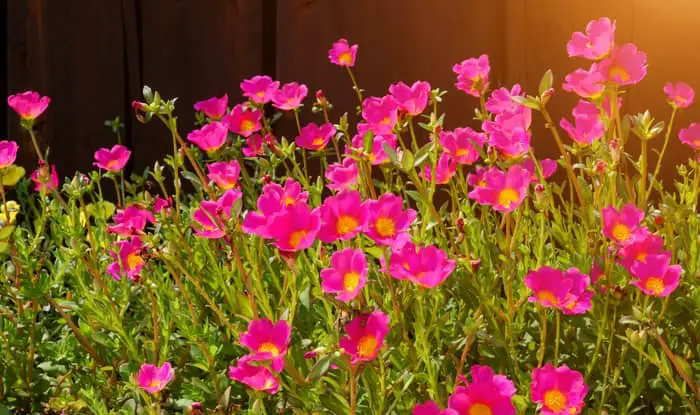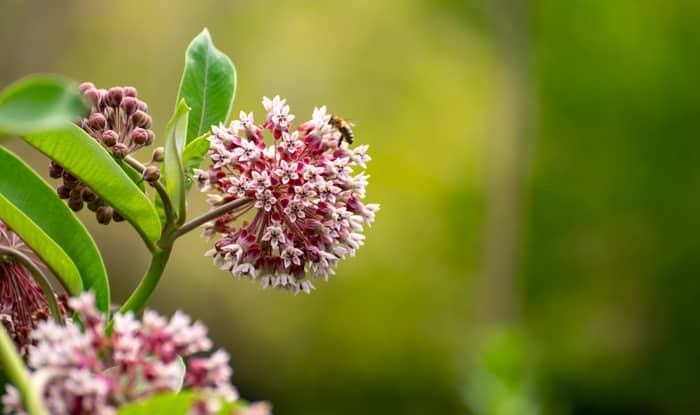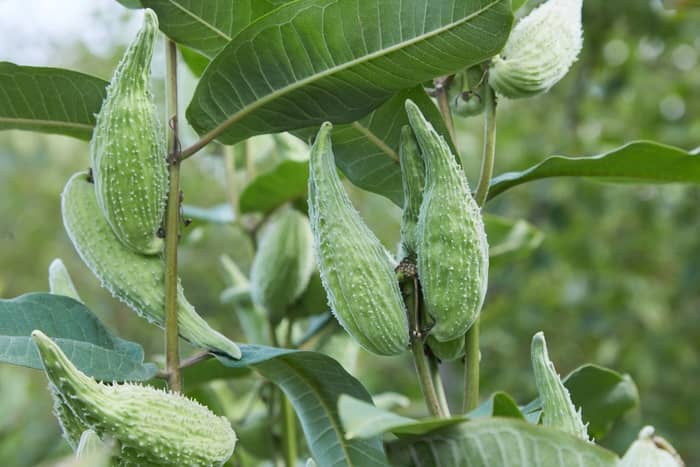Weeds with pink flowers can be attractive wildflowers.
But if you don’t want them growing in your yard, it’s important to identify them. This helps you take the right measures to control and eradicate these unwanted plants.
So in this article, I’ll take a look at some of the most common types you’re likely to find.
Let’s dive in!
15 Common Weeds With Pink Flowers
It’s easier to identify weeds with photos and descriptions. So I’ll break down the important things to know about the following weeds with pink flowers:
Common Stork’s Bill (Erodium cicutarium)
Also called redstem filaree and pinweed, the common stork’s-bill is an annual or biennial broadleaf weed. You can find this plant growing throughout temperate Eurasia and North America. As well as North and Northeast Africa.
Common stork’s-bill grows on dry grassy and sandy areas and you’ll often find it growing close to the sea. The plant grows in a sprawling mass and can reach up to 60 cm high.
It’s easy to identify common stork’s-bill. The leaves are fern-like and have hairy stems. The stems are green-red or reddish-brown. Bright flowers grow in a loose cluster of 3-7 at the end of the stems. Each flower has 5 almost elliptical petals. Common stork’s-bill blooms from May to August.
The seed pods of the plant are long and shaped like a stork’s bill. And when they’re ripe, the seed pods explode. Sending the seeds flying into the air and away from the maternal plant.
Red Clover (Trifolium pratense)
Red clover is a very common garden weed that you’ll often find growing on your lawn. It’s immediately recognizable by its dark pink flowers. Each flower head consists of 40-100 small flowers clustered together.
The plant grows in clumps and patches. And develops spreading or erect stems with the flower head at the top. The leaves of red clover grow alternately around the stem and are trifoliate — each leaf consists of 3 leaflets.
Red clover grows in any soil and quickly establishes itself. If you leave it, it will rapidly spread across your lawn and take over from desirable plants in your garden. So it’s best to deal with clover early if you don’t want it around.
Pink Wood Sorrell (Oxalis debilis)
Also known as pink oxalis, this is a flowering weed that needs your attention if it’s growing in your yard. It can be invasive and it has a reputation for being very difficult to get rid of. As wood sorrell spreads, it can destroy your lawn and make it difficult to plant in other garden areas.
It reproduces and spreads by bulbs and rhizomes, and takes over an area by growing in dense patches and crowding out other plants.
You can identify Oxalis debilis by its 5-petalled pink flowers. And green clover-like leaves that grow in a small mound up to 1 ft. tall. Each leaf consists of 3 heart-shaped leaflets.
Field Bindweed (Convolvulus arvensis)
This perennial broadleaf weed is sometimes mistaken for morning glory because of the similar appearance of its bell-shaped flowers that can be white, pink, or both colors.
Field bindweed is a creeping weed that extends long vines across the ground. When it encounters walls and trees it climbs over the obstacle in its path. And you’ll often first notice it as it scales your garden wall or fence and starts to encroach on your yard.
It’s a good idea to deal with field bindweed quickly once you notice it because it develops a deep root system that makes it difficult to remove once it’s established.
Shining Geranium (Geranium lucidum)
Shining geranium is an annual broadleaf weed that’s native to Europe, North Africa, and western Asia. Since its introduction to North America, the plant has become naturalized. But unfortunately, it’s now considered an invasive and noxious weed.
You’ll often see shining geranium growing in forest openings and along roadsides. But it might also sometimes make it into your garden.
Shining geranium is red-stemmed and can grow up to 20 inches tall. At the ends of the stems, the tiny pink-purple flowers grow in pairs. Each geranium flower consists of 5 petals.
The leaves of the plant are kidney-shaped or round, shiny and smooth, and have 5-7 lobes. The plant also produces seed pods that look like a crane’s bill.
A similar-looking weed, sometimes mistaken for shining geranium, is herb Robert. They can be told apart as herb Robert has a bad odor and doesn’t have shiny foliage.
To see the most common purple flowering weeds check out our guide.
Milk Thistle (Silybum marianum)
Milk thistle is a winter annual or biennial weed that’s uncomfortable to handle. You’ll often find it growing in disturbed areas such as fence rows, pastures, and roadsides.
Milk thistle has spines that cover the edges of the leaves and stems. And large prickly bracts that extend out around the base of the distinctive flower heads. The prickly and spiky weed blooms between April and October.
The fully mature plant can grow up to 6 feet tall. And has shiny green leaves with milky veins that give it a white marbling appearance.
Milk thistle has been used as an ornamental plant in the past. But it’s now a noxious weed. Milk thistle aggressively invades suitable areas, growing densely and pushing out native plants and beneficial forage. It’s also toxic to grazing animals as it’s a nitrate accumulator.
If you can, try to get rid of this weed before it sets seed. The plant is a prolific seeder. Producing around 6,000 seeds that can lie dormant in the soil for 10 years or more waiting for the right conditions to germinate.
Himalayan Balsam (Impatiens glandulifera)
As the name suggests, Himalayan balsam is originally a native of the Himalayas. After its introduction to North America and Europe, it has become naturalized and is now considered an invasive weed.
Himalayan balsam is very effective at dispersing seeds. And it’s also very attractive to pollinators. And this helps it to spread and outcompete native plants.
The big pink flowers are hooded and look like a policeman’s helmet. This is responsible for other common names used to describe the plant such as policeman’s helmet, and bobby tops in England. The flowers appear between June and October. After which, green seed pods form that are sensitive to touch and easily explode.
Himalayan balsam is a tall weed that grows over 6 feet. It has a green stem that’s sometimes red-tinged. And large lanceolate leaves that grow to around 9 inches long. You can eat the young foliage, seed pods, and seeds of Himalayan balsam. And you can use the flowers to make jam.
It also has medicinal properties and is sometimes used to treat anxiety and soothe burns.
Rosebay Willowherb (Chamaenerion angustifolium)
Rosebay willowherb also goes by the names fireweed and great willowherb. The weed has brilliant pink flowers (1) that are reminiscent of primrose. Each has 4 petals with 4 narrow sepals behind.
Rosebay willowherb can thrive in almost any environment. And quickly spreads through seeds and rhizomes, forming large patches as it takes over an area. This makes the plant hard to control and it’s considered a noxious weed in many US states. It aggressively outcompetes native and cultivated plants when it invades an area.
Rosebay willowherb is tall, growing up to 6 feet in height. The weed has thick red stems and lanceolate leaves and blooms from late spring through to late summer. After which, reddish-brown seed capsules develop. Each contains 300-400 seeds that are easily dispersed by the wind.
Joe Pye Weed (Eupatorium purpureum)
Eupatorium purpureum is a herbaceous perennial weed that’s native to central and eastern North America. It’s an attractive wildflower that you’ll often see growing in roadside ditches, wet meadows, and on wooded slopes. Some people also like to cultivate it as an ornamental plant in landscaped gardens.
Eupatorium purpureum thrives in moist soil and sunny locations. And if your garden provides the right conditions, the plant can spread by seed from nearby locations and start to grow.
Joe Pye weed grows in upright clumps. The plant can reach over 6 ft. tall, with whorls of 3-4 dark green leaves growing from purple leaf nodes on its thick green stem. Eupatorium purpureum blooms from July to September. Producing small mauve-pink flowers that grow in clusters at the top of the stems and give off a sweet vanilla scent.
Spotted Knapweed (Centaurea stoebe)
Spotted knapweed is originally a native of Eurasia but it was accidentally introduced to North America in the 1890s and is considered highly invasive. It’s a problem wherever it grows because it’s poisonous to other plants and creates barren areas where only spotted knapweed can thrive.
From June to August, purple-pink flowers develop that look similar to thistle flowers. The flowers are small and grow at the end of branched stems. There are bracts around the flower head extending under each flower petal.
Centaurea stoebe grows up to 4 ft. tall and has long grayish-green leaves with lance-shaped lobes.
Field Madder (Sherardia arvensis)
Field madder is a winter annual broadleaf weed that’s widely distributed across Europe, North Africa, and parts of Asia. It’s also naturalized in the United States, Canada, Australia, and New Zealand.
Field madder is a low-growing plant that forms a dense mat as it sprawls across the ground. The square stems grow up to 16 inches long. And the pointed, elliptical-shaped leaves grow in whorls around the stem and are covered in short bristles.
Field madder blooms in the spring. Small flowers grow in stalked clusters of 4-10 at the end of the stems. The flowers are pink to lavender in color. And each flower has 4 petals and 4 stamens.
Field madder spreads by seed and it’s common to find it growing on thin and patchy turf if the seeds are blown into your yard. You’ll also find it around grasslands, fields, pastures, and areas of dry and disturbed land.
Pink Dandelion (Taraxacum pseudoroseum)
TARAXACUM PSEUDOROSEUM BY NOOBNARWAL, CC BY-SA 4.0, VIA WIKIMEDIA COMMONS
Originally native to central Asia, Taraxacum pseudoroseum grows in many parts of the world. You can identify this weed by its distinctive flower with yellow-colored florets in the center (2) that appear from May to October, commonly growing in forest margins, meadows, and along roadsides.
This dandelion is sometimes grown by gardeners because of its pretty pink and yellow flowers and the ease with which it grows. But the seeds are easily dispersed by the wind allowing Taraxacum pseudoroseum to spread to nearby locations.
Wild Onion (Allium canadense)
WILD ONION BY MICHAEL TROLOVE, CC BY-SA 2.0
Wild onion is easy to mistake for tall grass. It’s a common lawn weed that stands out in most turfgrasses and alerts you to its presence by its familiar onion smell.
Wild onion is a fast-growing weed that grows in clumps. In late spring and summer, wild onion produces clusters of flowers at the top of the leaves. Some wild garlic plants have white flowers instead.
Pink Purslane (Portulaca pilosa)
Portulaca pilosa is a low-growing annual plant native to the Americas that has spread to other parts of the world. The plant typically reaches a height of up to 8 inches and has succulent stems and leaves that vary in color from green to reddish-purple. The leaves are arranged alternately along the stems and are usually no more than an inch (2.5 cm) long.
The flowers of this purslane variety are small and bright pink, with five petals (3) and numerous stamens, and bloom from late spring to early fall, depending on the climate. These are followed by fleshy seed capsules containing many tiny seeds.
Purslane prefers sunny, well-drained areas, and you can often find it growing in lawns, gardens, fields, and waste areas. The plant is tolerant of heat and drought and can survive in a variety of soil types. Purslane spreads by reseeding and can also propagate vegetatively from stem pieces.
To control purslane, manual weeding is effective as long as you dispose of the uprooted plant. Mulching can also help suppress the growth of the weed. You can use pre-emergent herbicides to prevent seed germination and post-emergent herbicides kill established weeds.
Common Milkweed (Asclepias syriaca)
Common milkweed is a perennial herbaceous plant native to North America. It can grow up to 8 feet but typically ranges from 3 to 5 feet. The leaves are large, oval-shaped, arranged in opposite pairs along the stem, and smooth on top with a velvety underside. The stems are sturdy, grow upright, and unbranched, and contain a milky sap that’s toxic to some animals.
Common milkweed produces small, star-shaped flowers that vary from pink to purple-pink in color. The flowers grow in clusters at the top of the stem and bloom from June to August.
Asclepias syriaca has a deep taproot with smaller lateral roots branching off. The weed also spreads through white rhizomes, helping the plant colonize new areas.
You can find it growing in a range of habitats, including fields, meadows, roadsides, and woodland edges. It prefers well-drained soil and full sun. The plant primarily spreads through seeds, released from pods that split open when mature. The seeds are attached to silky white fibers that help them disperse on the wind.
Asclepias syriaca can be difficult to control. Hand-pulling or mowing the plants before they set seed helps prevent their spread. You can also use herbicides.
Common milkweed is an important host plant for monarch butterflies. The larvae of monarch butterflies feed exclusively on the leaves, and the toxins in the sap make the caterpillars toxic to predators. The flowers are also attractive to other pollinators, including bees and butterflies.
References:
- Rosebay Willowherb – https://www.wildlifetrusts.org/wildlife-explorer/wildflowers/rosebay-willowherb
- Taraxacum pseudoroseum – https://garden.org/plants/view/186364/Pink-Dandelion-Taraxacum-pseudoroseum/
- Portulaca Pilosa – https://www.wildflower.org/plants/result.php?id_plant=popi3
